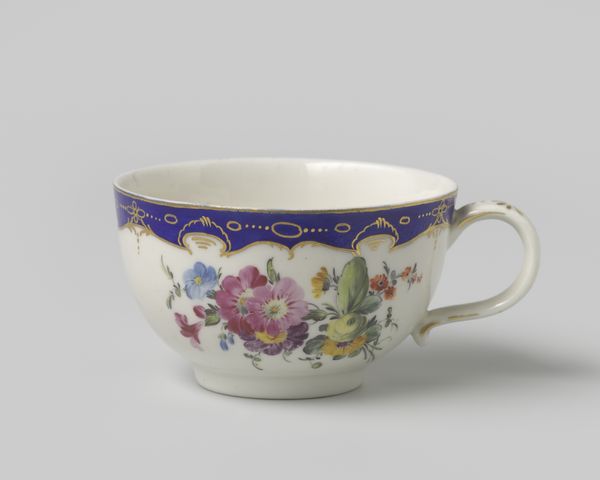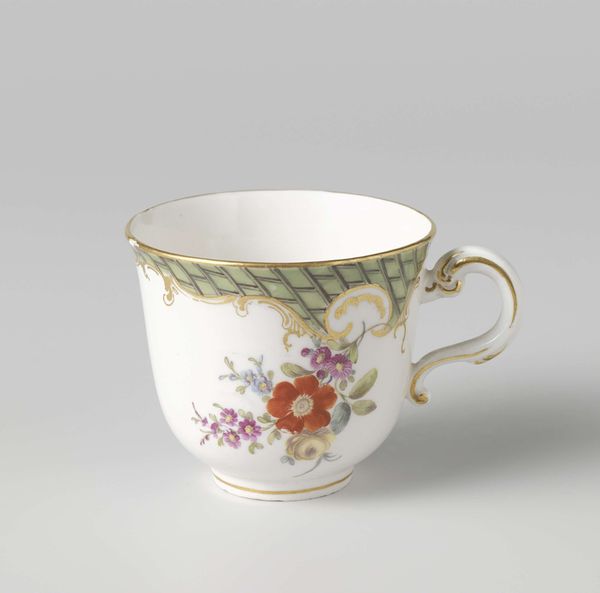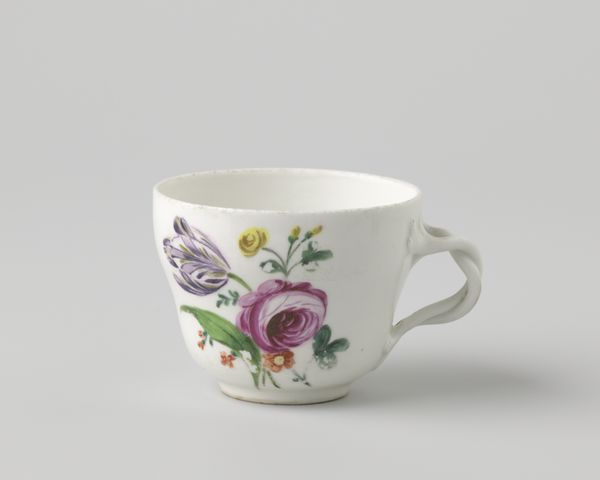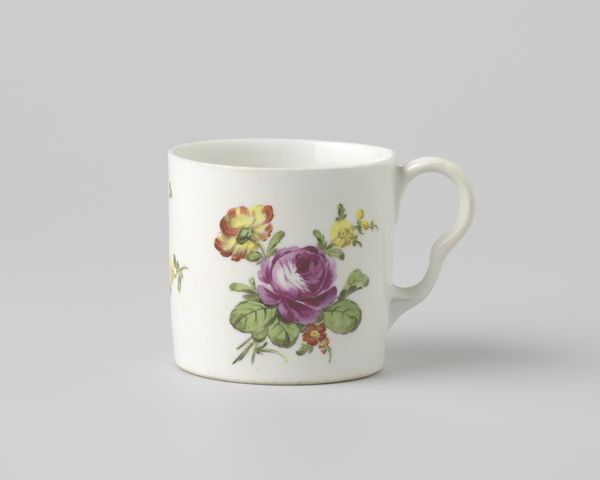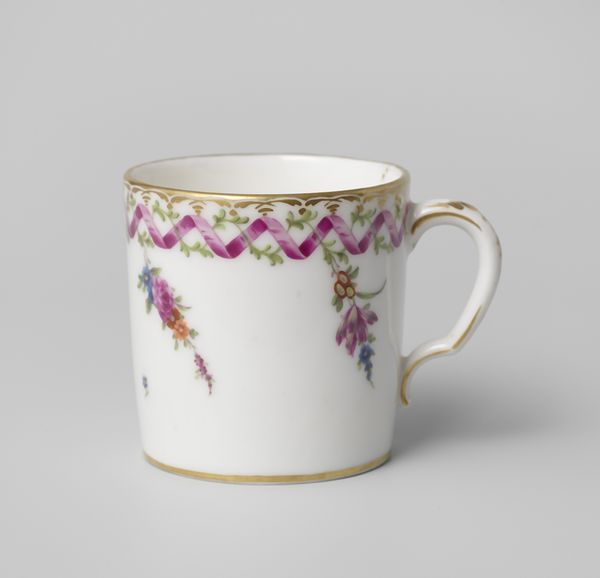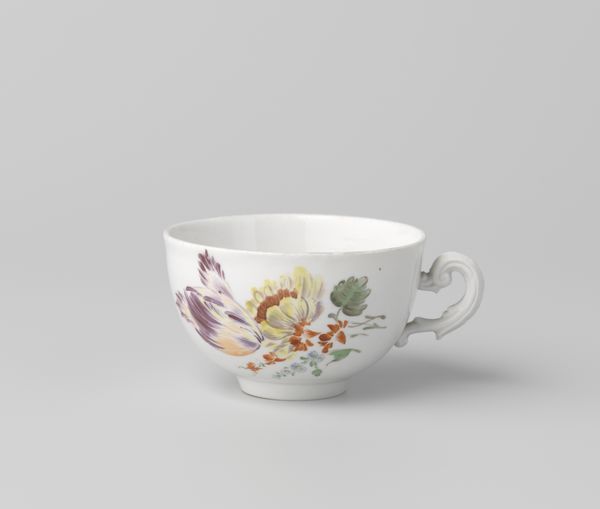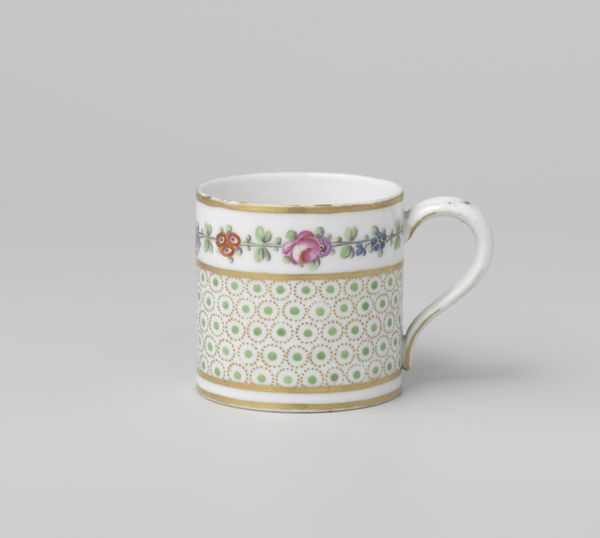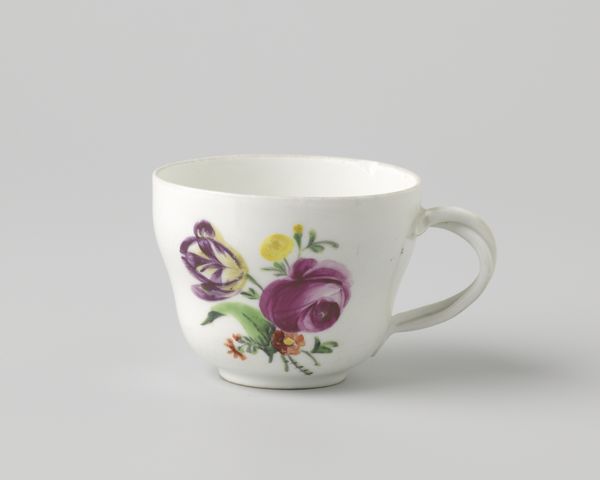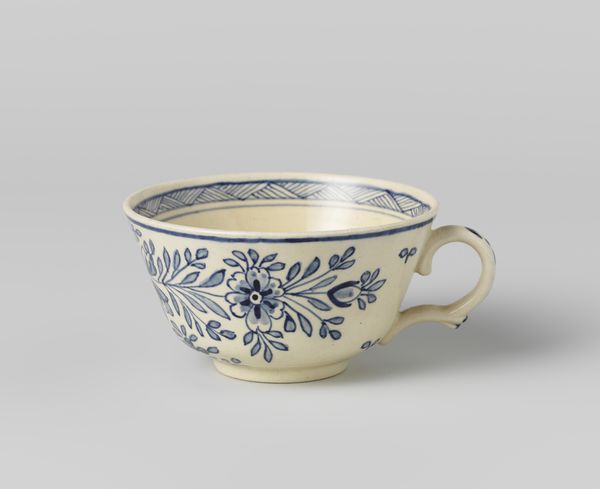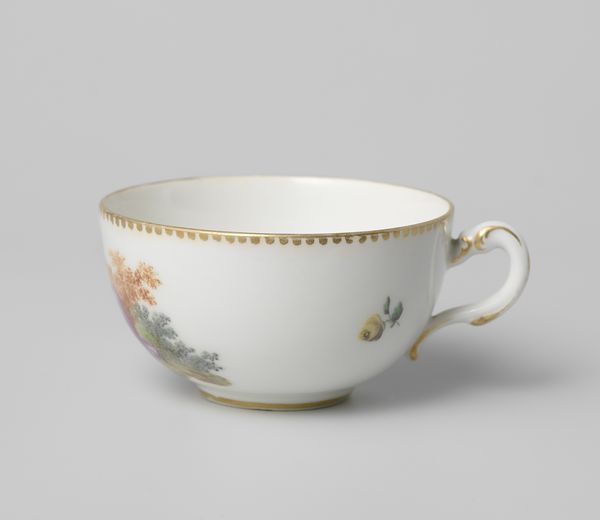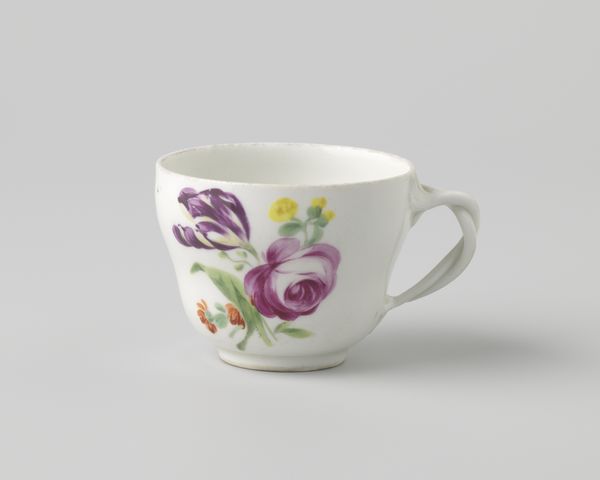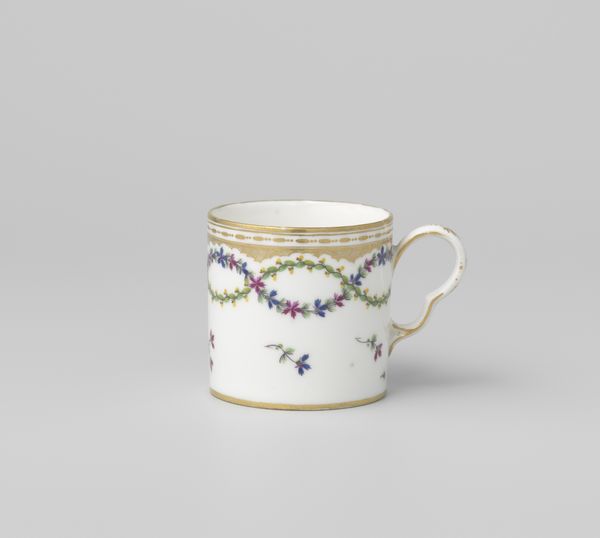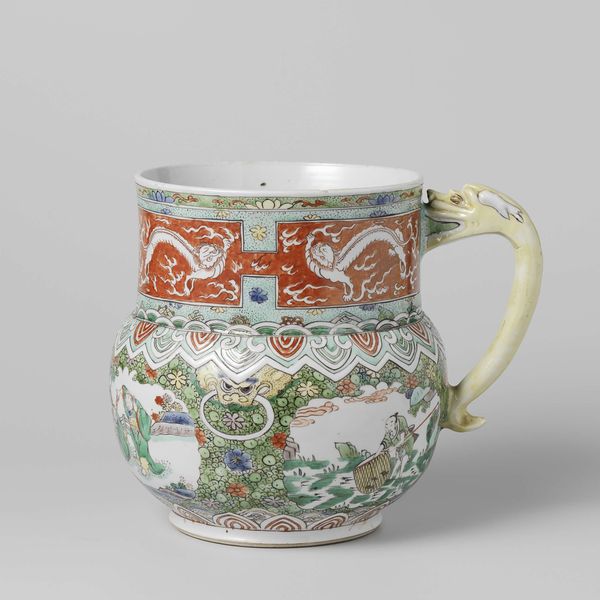
Kop, beschilderd met een bloemboeket en twee bloemtakken c. 1778 - 1782
0:00
0:00
Dimensions: height 6.5 cm, width 8.6 cm, diameter 7 cm
Copyright: Rijks Museum: Open Domain
Curator: Ah, this delicate cup positively whispers elegance. Doesn't it just evoke the clinking of china and whispered secrets over afternoon tea? Editor: It's meticulously arranged. Look at how the painter structures the floral elements—the large rose acting as a focal point, balanced by the asymmetrical arrangement of smaller blooms and foliage. The artist's use of visual weight distributes the floral motif in an admirable composition. Curator: We’re looking at a piece made by the Loosdrecht porcelain factory between 1778 and 1782. They called it a "Kop, beschilderd met een bloemboeket en twee bloemtakken” or cup painted with a flower bouquet and two floral sprigs. It’s such an innocent little thing, so determinedly decorative and charming. It's definitely leaning hard into the Rococo style, with those sweet pastel colours. Editor: The constrained colour palette does a remarkable job evoking tenderness. The delicate brushstrokes and use of glazing emphasize the ceramic’s smoothness. It adds to the feeling of something ephemeral. Note also the gilding that delicately trims the handle and rims. Curator: Makes you want to take better care with your teacups, right? Almost as if such an unassuming item as a simple cup embodies, en miniature, a whole aesthetic system. What is more rococo than something so exquisitely embellished? But what does this level of ornamentation speak to? Editor: We could consider this porcelain cup as more than mere utility; instead, it could symbolize status, taste, and wealth within 18th-century society. The craftsmanship certainly embodies and reflects aristocratic values, revealing social stratification encoded in form. Curator: It does seem more destined to be admired, doesn't it? Maybe stroked a little too lovingly while someone tells you about their day. Editor: Precisely. The cup operates beyond function. Curator: What I appreciate most, and what maybe the maker cared most for, too, is the enduring freshness. These colours were revolutionary, somehow so subtle yet lasting. They carry with them an air of eternal spring. Editor: Agreed. Analyzing its components through a visual, even material vocabulary reveals an art object dense with details. The historical intention and the resulting social reading enrich our modern experience with the artwork. Curator: Absolutely!
Comments
No comments
Be the first to comment and join the conversation on the ultimate creative platform.
